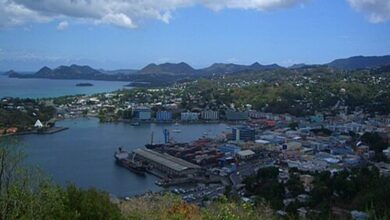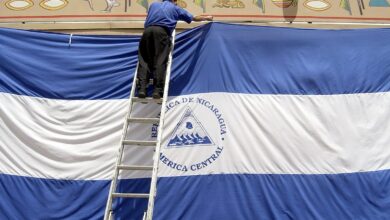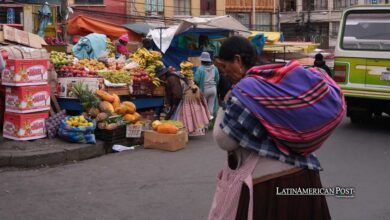Eighty and Entrenched: Daniel Ortega’s Bunker Birthday and the Nicaraguan Autocracy Time Built
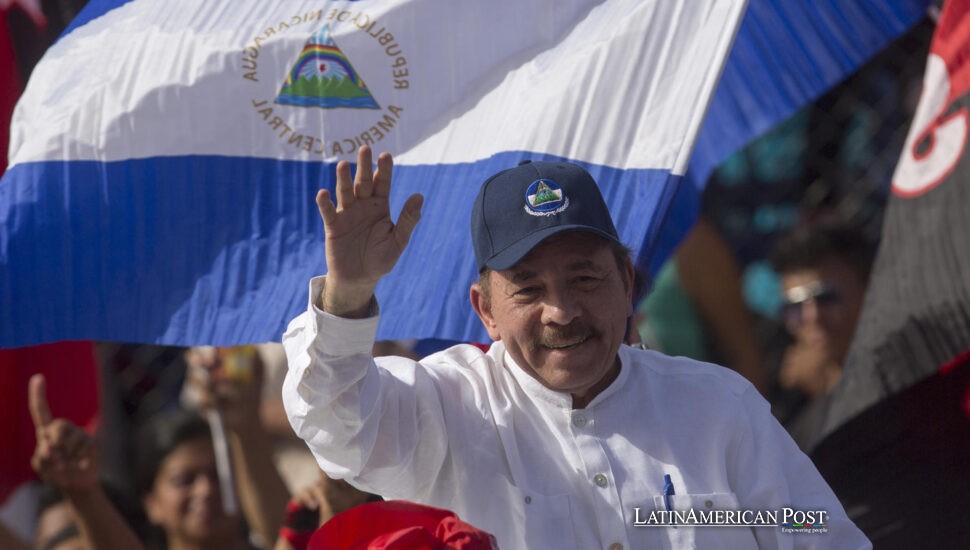
Daniel Ortega turned 80 on November 11, and the celebratory hashtags sounded like a succession rehearsal. His long rule was built slowly. Only the 2018 street rebellion stripped the camouflage, exposing a government prepared to rule by fear, not consent.
A Birthday in a Bunker
Turn eighty as a head of state and tradition suggests a countrywide serenade, the carefully staged tour of plazas and provinces, a leader basking in applause he pretends not to need. In Nicaragua, the choreography looked different —tighter, tenser, more in line with the regime’s current mood.
Rosario Murillo, first lady turned co-president by constitutional sleight, released #TodosSomosDaniel, a hashtag that felt more like an instruction than a celebration. Laureano, the son most often described as the dauphin, popped up in the photos that matter to an isolated state: standing with Chinese envoys, gauging Moscow’s warmth, rehearsing the grammar of next. His father stayed off planes, save for ritual pilgrimages to friendly Havana and Caracas. The stagecraft did the explaining: succession is a family project; power is a household item.
Walking through Managua on a night like that, you notice what isn’t there. No victory laps through all 153 municipalities—no unscripted crowd scenes. Ortega’s public presence has shrunk to ring-fenced broadcasts and fly-specked camera setups, the city reduced to a secure perimeter that keeps the country out. The old revolutionary comrades, the faces that still cling to sun-faded murals, are gone from the inner circle or recast as enemies. The man who has ruled Nicaragua longer than anyone in the modern era turned eighty, insulated from the people he once promised to reinvent.
Birthdays invite inventory. Taking Ortega at his word over decades, devotion to sovereignty, to the mystique of the revolution, to people with low incomes, requires setting his promises beside the machine that carried him to this week’s milestone. It isn’t a system of alternation and argument; it is a system that fuses family, party, and state. Its defining feature —and the one that misled so many for so long —was tempo. He did not smash the glass; he fogged it up, slowly, patiently, until almost no one could see through.
That is why the round number matters. Eighty gives you a frame wide enough to hold the whole arc: from plural revolution to personalized rule, from alliances with once-sworn enemies to a regime that now jails ex-comrades. It also sharpens the story’s hinge. For a decade after returning to office in 2007, Ortega moved like a careful locksmith, testing each bolt and spring. Only when the streets roared in 2018 did he drop the mask and reach for the truncheon in full view.
The paradox of this birthday week is that it felt like both a toast and a eulogy. The hashtags clapped, the family posed, yet the atmosphere felt more like a bunker than a ballroom. Autocracies look most stable just before they crack; they also think most brittle when their control seems total. Ortega’s eightieth distilled that contradiction into a single scene: a leader publicly celebrated and privately fortified, a dynasty practicing continuity while the country measures the cost.
From Party Purge to State Capture
Before we reach the barricades and the tear gas, we need to remember a different kind of fight —the one that happened inside the Sandinista Front, long before the sirens. The revolution that toppled Anastasio Somoza Debayle in 1979 built a state driven by a nine-person National Directorate. It was messy, war-scarred, and contradictory, but it aspired to pluralism. Nicaragua held landmark elections in 1984, adopted a constitution in 1987, and, in 1990, held its first open presidential election in more than half a century—Violeta Barrios de Chamorro’s victory thrilled foreign observers who read it as democratic normalcy at last. Inside the FSLN, it felt like a rupture and a reckoning.
The incoming hurricane has a name in Nicaraguan memory: La Piñata. During the hurried transition of 1990, Sandinista leaders privatized and appropriated state assets in a scramble to build a cushion for the years out of power. A revolutionary vanguard acquired title deeds and shares. A party that had embodied a social project now carried property portfolios. Defeat forced the FSLN to become an opposition party; it also created a powerful incentive to build a parallel private economy.
The more profound transformation came later. In the mid-1990s, renovators like Sergio Ramírez and Dora María Téllez tried to democratize the party and adapt it to a liberal republic. Ortega and Tomás Borge had a blunter plan: control the machine, purge dissent, reduce the chorus to a solo. The 1995 split gave birth to the Sandinista Renovation Movement and, more importantly, left Ortega with the party’s bones and sinews. Congresses that once argued turned into verify-and-applaud sessions. The plural leadership of nine became a museum image. The first de-democratization didn’t happen in the National Assembly. It happened in the FSLN’s bloodstream.
On the other side of the aisle, the right sabotaged itself. The Chamorro years strengthened institutions but shrank social protections; the 1990s were an era of peace and austerity. Arnoldo Alemán’s 1996 victory lashed the state to clientelism and corruption. When scandal overtook him, Alemán struck a deal with Ortega. The agreement, El Pacto, was dressed up as a measure of governability. In practice, it centralized power. The Supreme Court, the Comptroller, the Supreme Electoral Council, and two caudillos split the referees and rewrote the rulebook.
Lower the threshold to win a presidential election outright to the mid-30s. Raise the barrier to new parties by demanding draconian thresholds for voter registration. Grant automatic seats and immunity to outgoing presidents and runners-up. Harden the conditions for lifting immunity. All of it expressed as modest institutional reform. All of it aimed at tilting the terrain, slowly, legally, with a smile. Elections continued. Observers flew in and stamped “generally free.” But the field acquired a barely perceptible slant that decided games before the first whistle.
Ortega lost yet again in 2001, this time to Enrique Bolaños, and watched as the liberals consumed themselves, Alemán and Bolaños warring in public while the FSLN burrowed deeper into courts and electoral bodies. By 2006, the right split between Eduardo Montealegre and José Rizo; Ortega returned to the presidency with just over 38 percent. It looked like alternation. It felt like relief. It was a comeback engineered by a party already trained to accept one voice and a state whose guardians had been quietly tuned to that frequency.
When Ortega retook the sash, he didn’t seize radio stations or shutter the press. He didn’t need to. The pact had placed a governor inside the machinery. In that phase, his central skill wasn’t repression; it was patience. He would use the law like a file, not a hammer. And because so much of it looked boring, it went mostly unnoticed. That was the genius, and the trap he set.
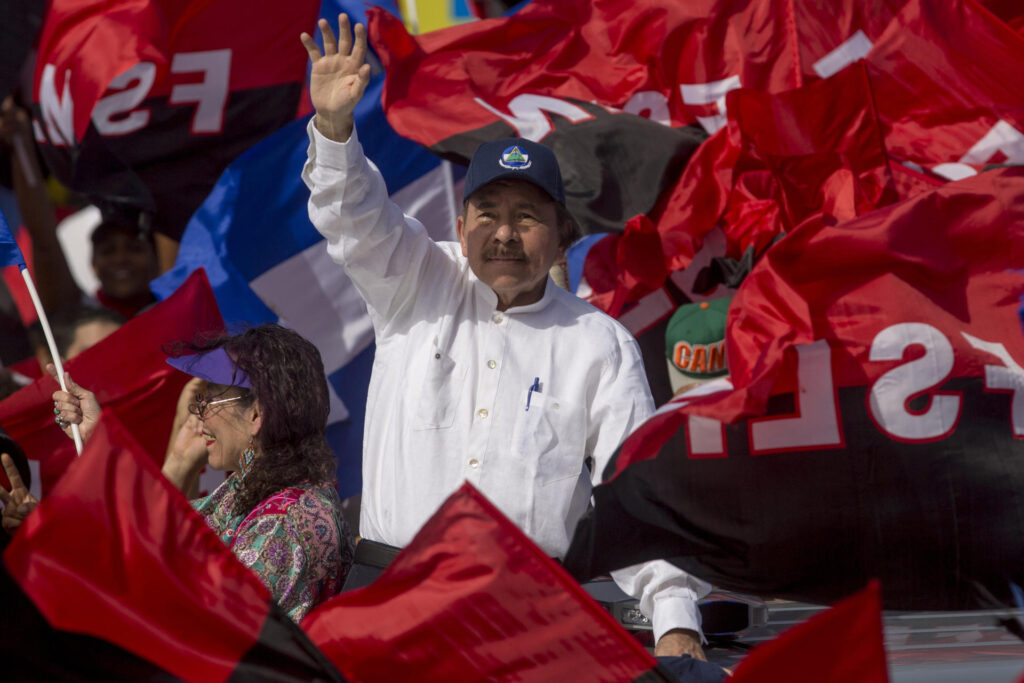
The Bargain Years: Co-optation Over Crackdown
The early Ortega–Murillo period did not look like a revolution reborn. It looked like a deal with enough sugar to go down easily. Big business got predictability, profits, and a chair at the table of “consensus.” The government flashed a modern face to multilateral lenders. For people experiencing poverty, some programs felt intimate, such as milk cows, zinc roofs, and food packages delivered through party intermediaries who made the state’s presence tangible and transactional. Two truths can live in the same sentence: those programs helped real people, and they trained voters to associate assistance with obedience.
At the same time, the electoral arena narrowed without fanfare. In 2008, the Supreme Electoral Council stripped rivals of legal standing and ran municipal contests that blended genuine competition with conveniently selective fraud. Opposition marches met counter-marches; legal challenges met shrugs. The lesson was simple: why rig ballots on Election Day when you can rig the field months or years in advance?
Two moves sealed the game. First, the legal contortion that allowed Ortega to run again in 2011 despite a constitutional ban on re-election. Sandinista judges discovered that the right to be elected trumped the constitution’s text; the ban melted like fog at sunrise. Second, a 2014 constitutional reform abolished term limits entirely, expanded rule by decree, tethered the security forces more closely to the presidency, and turned legislative seats into party property rather than personal mandates. From that point, a dissident deputy risked not only sanctions but erasure.
The family’s imprint deepened. In 2008, Murillo moved from first lady to communications czar, gathering the levers of propaganda into her office and, over time, taking on a co-governance feel. The children appeared not as ornaments but as operatives. The party blurred into the state and then into the household. Nicaragua drifted from republic to family firm, and the drift came with plausible deniability: “We’re holding elections, aren’t we?”
The Church remained a cautious partner for a while. Business kept the conversation going. Foreign governments, relieved that Nicaragua didn’t burn, treated the closing of civic space as an unfortunate side effect of stability. Driving across the country in those years, you could feel both realities: a quieter life than the 1980s, and a political canopy lowered a notch each season.
Ortega’s talent in this period was to make authoritarianism feel incremental, even dangerous, reasonable. He didn’t jail all his former comrades at once. He didn’t yet criminalize dissent with sweeping laws. He preferred the quiet threat, the tax audit, the canceled legal status, the phone call reminding a station manager that broadcast licenses can be revoked. This was de-democratization by a thousand adjustments, many of them dull. The dullness was the point: if politics becomes paperwork, resistance becomes fatigue.
By 2016, the edifice looked complete. The FSLN held an overwhelming majority in the National Assembly. Municipal maps are shaded the same color. The opposition seemed broken beyond imagination. The hybrid regime,competitive-looking, uncompetitive in fact, purred along. And then, over pensions and pride, the streets discovered their voice.
2018 and After: The Skull Beneath the Mask
The spark was technocratic and small: a change in social security that demanded more from workers and promised less to older people. The first protests were led by people who had already paid into the state’s promise, retirees who felt cheated. What followed felt like a series of choices the regime had rehearsed for years.
Youth brigades aligned with the ruling party confronted students. Police arrived fast and hard. Cell phone video turned skirmishes into a national feed. Students stood up for the pensioners. Their parents stood for them. Universities turned into forts. Neighborhoods raised barricades. Blue-and-white flags reclaimed the street.
A patient autocrat faced the dilemma that slows even the most careful strongmen: bend or break. Ortega and Murillo could have reversed the decree, invited the Church to mediate, and absorbed a dent to their authority. Instead, they declared the protests an attempted coup and sent men in masks with rifles to settle politics. Police and paramilitaries worked in tandem to dismantle barricades, seize campuses, and clear neighborhoods. Snipers appeared. Funerals multiplied. Words that had buoyed the bargain years, dialogue, stability, reconciliation, lost their force in the crack of gunfire.
Once the apparatus of coercion stepped fully into the light, the legal armor arrived to keep it there. In 2020, amid a pandemic that demanded trust, the National Assembly passed a legal trilogy: a cybercrime law criminalizing “false” or “distorted” information; a foreign-agents law forcing NGOs and cultural institutions to register as suspects if they received funds from abroad; and a sweeping “defense of sovereignty” law that turned broad categories of dissent into treason. These laws didn’t invent repression; they rationalized it and dressed it in procedure.
The 2021 election cycle completed the transition from a hybrid to a closed regime. Parties that might have competed lost their legal status. At least six presidential hopefuls were arrested before the vote. Icons of the guerrilla war against Somoza, people who had freed Ortega from prison in the 1970s, found themselves imprisoned by the man they once saved. Hugo Torres died behind bars. Dora María Téllez received an eight-year sentence before being stripped of her nationality. The ballot became liturgy with a predetermined result.
Repression widened beyond party politics. The Jesuit-founded Central American University was confiscated in 2023. Religious processions were curtailed or driven indoors; priests and evangelical pastors were jailed. Indigenous and Afro-descendant leaders who documented land invasions and violence in the Caribbean Coast found that the state treated their communities as obstacles to be managed. The message, in courts and on television, was that the regime would tolerate no independent pole of authority: not the Church, not universities, not civil society, not even the president’s own brother, detained in 2024, a televised reminder to the armed forces that family does not outrank obedience.
Perhaps the starkest index of the regime’s self-image came with the denationalizations. In 2023, more than two hundred dissidents and exiles learned that their citizenship had been revoked. With a single act, people were rendered stateless, their civil registries erased, properties confiscated, pensions canceled, and degrees voided. A government that treats nationality as a revocable privilege has crossed a frontier in its own head. It is no longer arguing with citizens; it is deciding who counts as a person before the law.
All of this, the laws, the arrests, the purges, the confiscations, traces back to the hinge of 2018. That spring didn’t turn a democrat into a dictator; it forced a patient autocrat to show his hand. For more than a decade, Ortega preferred buying silence rather than crushing speech, bending institutions rather than breaking bones. Mass mobilization made that calculus obsolete. The bargain years ended at the first barricade.
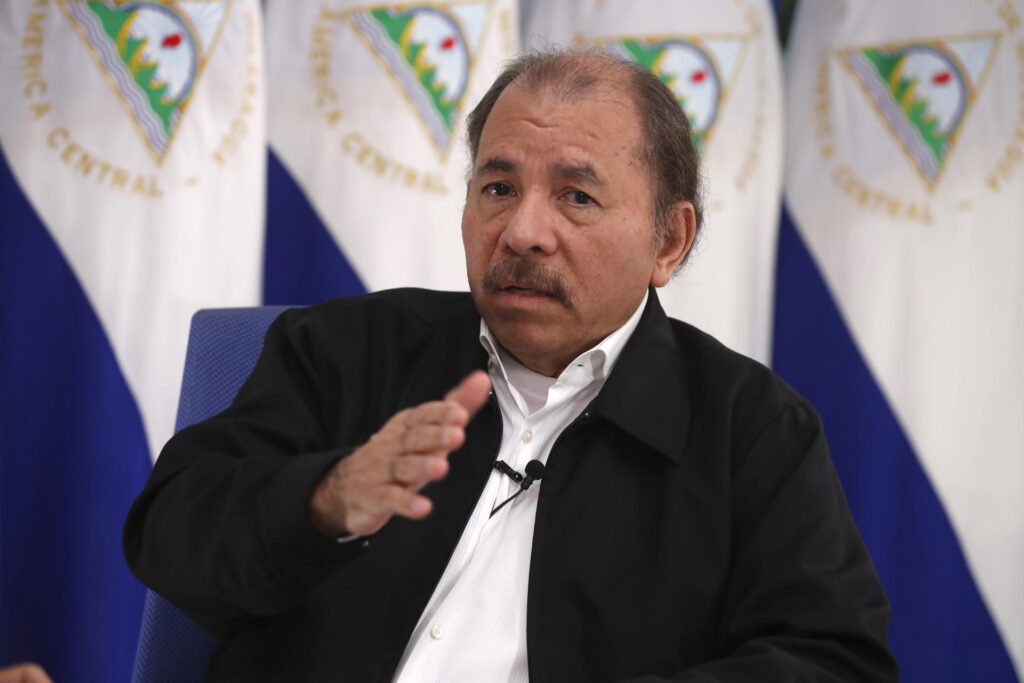
Is Nicaragua Still a Republic?
Which returns us to the birthday. An octogenarian president, openly co-governing with his wife and promoting a son as emissary to major powers, celebrates under the banner “We are all Daniel.” The truth is closer to its mirror: everywhere you look, the state tries to make Daniel all of us. It wants the Church to sound like him, the courts to think like him, the universities to teach like him, the army and police to obey like him, the registry to bless and banish like him. That isn’t a republic. It’s a projection.
Anniversaries juggle memory and time. Ortega’s life contains heroism and survival. It also includes the knowledge, seared in 1990, that a coalition of voters and institutions can send a president home. His central project since the mid-1990s has been to make that coalition impossible to reconstruct. He captured his party, then the referees, then the levers of the state; he courted business, managed the Church, wore legality like a cloak. For years, it worked. And then, in the hot days of April 2018, teenagers tore the veil, and ordinary people saw the skull beneath the mask.
An opinion worth holding as the balloons deflate is not simply that Ortega is a dictator. It is that his dictatorship is a story about time. He taught the country to mistake slowness for moderation. He taught outsiders to mistake elections for choice. He taught allies to mistake access for influence. Every lesson was designed to keep the system quiet until the day it needed to be loud. That day came seven years before his eightieth. The regime we now see, the one that strips nationality and seizes universities and jails priests, is the regime that 2018 revealed.
What follows is impossible to predict from the outside. Autocracies are brittle in ways metrics cannot catch, and Nicaragua’s history is full of surprises. But a sober inventory on Ortega’s birthday notes that the state he built depends on loyalty that must be constantly purchased or compelled, and on a family compact that invites rivalry and error. The careful construction bred its own fragility: once you turn citizens into ghosts and institutions into echo chambers, you lose the self-correction that keeps power in check. Mistakes amplify.
If there’s an irony at eighty, it’s this: Ortega’s fiercest enemy was never the opposition across the aisle; it was the memory of 1990, the horror of losing to a coalition that agreed only on change. The slow de-democratization perfected after 2007 was built to keep that memory from becoming fact again. In 2018, the memory returned, not at the ballot box but in the streets. The regime beat it back with bullets and laws. The question, as candles gutter and hashtags fade, is whether the country that learned to march once can learn to count again.
And the answer will not come from a hashtag or a broadcast, not from a foreign trip or a family portrait. It will come from whether institutions that still remember their purpose, judges who know what a constitution is for, officers who remember whom they serve, teachers who refuse to edit the truth out of the syllabus, can find each other again. It will come from whether those who left can talk to those who stayed without turning every conversation into a test. It will come from the quiet work that authoritarian regimes cannot efficiently police: rebuilding trust, seed by seed, in small rooms.
The bunker can postpone that work. It cannot abolish it. Time, Ortega’s favorite instrument, cuts both ways. He used it to dull the country’s senses. It may yet be the tool that restores them.
Also Read: Latin America Tests Washington’s Credibility as China Redraws Maritime Rules

